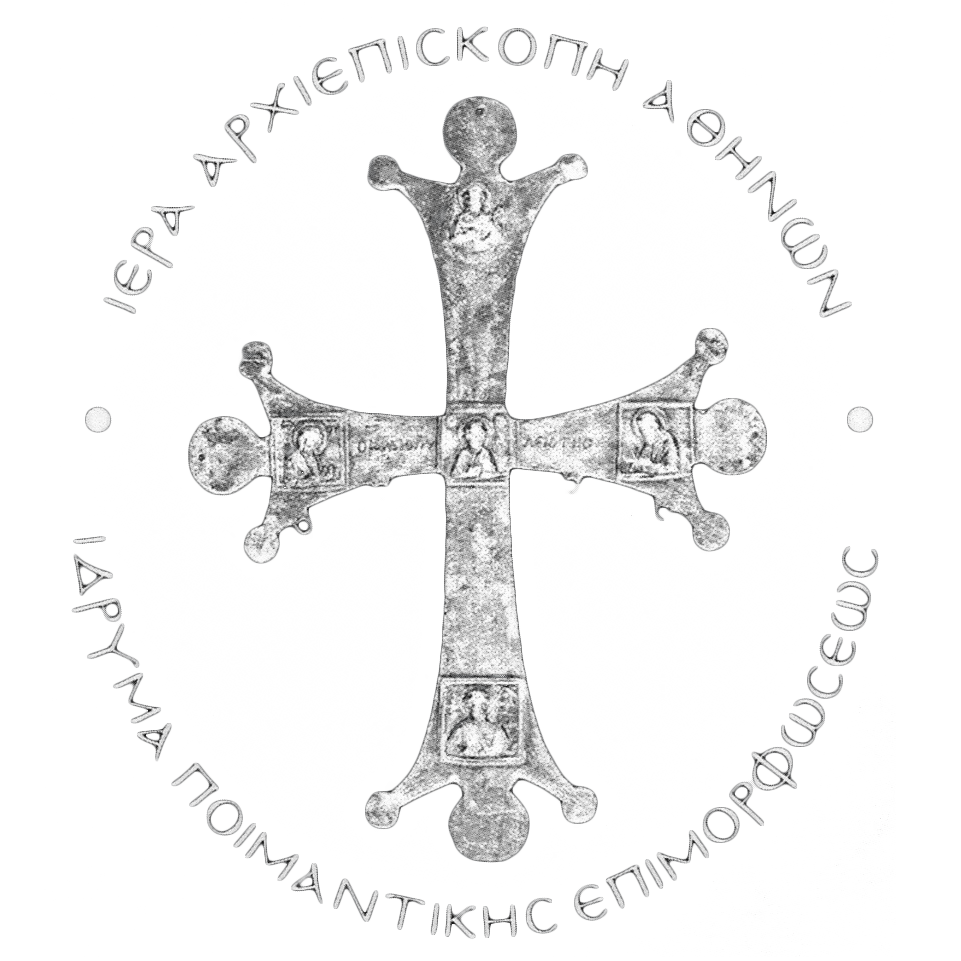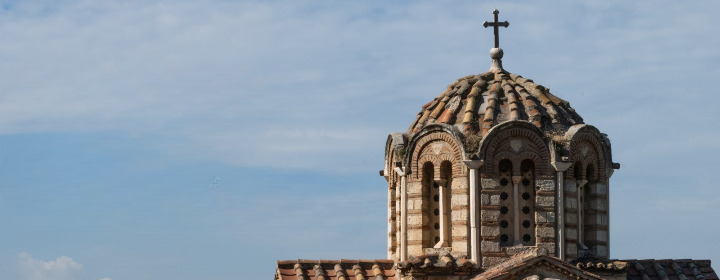
ATHENIAN ARMOSIS
Foundation for Pastoral Education of the Holy Archdiocese of Athens

«Closed Athens»
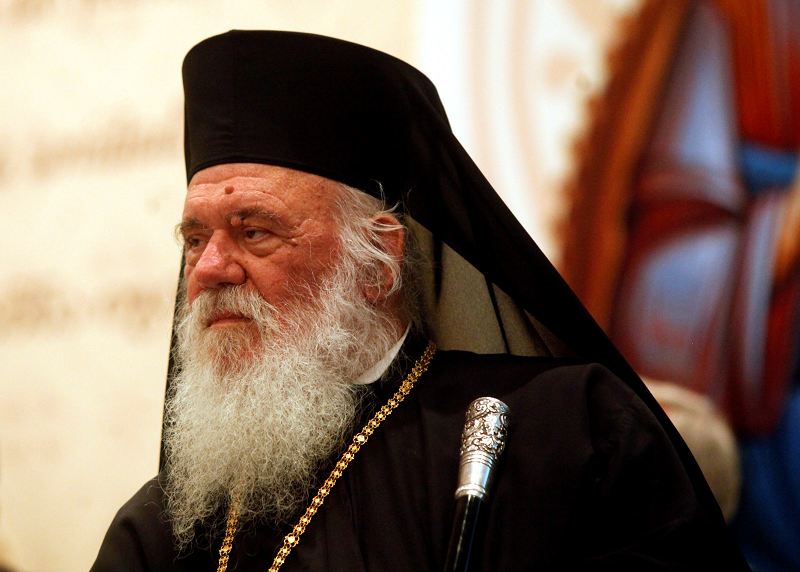
A few millennia after Erechtheus, mythical founder of Athens.
Countless years after Theseus, mythical king and hero of the city.
2777 years after the painter of Dipylos, who had a workshop in Kerameikos.
2558 years after Thespi, the first to teach tragedy upon the world.
2460 years after Pericles and the opening of the Parthenon.
2345 years after Alexander the Great.
1979 years since Paul's sermon on the Areopagus.
1672 years after the study of Vassiliou and Gregory in the homeland of the "city".
820 years after the Crusade and the expulsion of the most learned of my predecessors from the episcopal see of Athens.
190 years after the issuance of the Royal Decree that defined Athens as the "Royal Cathedral and Capital".
Read moreToday... just before something changes again and something new is written in history, I sit - I, the Athenian pilgrim - "in front of the altar of the Lord", a little below Saint Demetrius Lumbardiaris and I watch the travelers going up the stairs…
Those steps that... if I disturb images of the life of our fathers, I will still see the daughters of Athens climb up with the sacred veil of the goddess... I will see torchlight processions! I will watch sports games! I will see statues, statues, tragedies, events, discourses, gymnasiums, schools, I will see the "superstitious in everything" people, the Athenians, honoring wisdom and seeking the light, not the sensible, but the imaginary and the real.
I turn my eyes lower than the temple, and I see the step... Not the step of the word, but the step that the Word took to meet the Hellenic humanity that was suffering and fighting in the sport of "building a city". Here, on the Areopagus, another evangelization took place; now Paul is an angel, Mary is Athens, pregnant with beauty... Beauty will save the world, said Basilios, archbishop of Caesarea Cappadocia.
The meeting of Paul who preaches the gospel with the right word gave birth, ignited, dynamized, gave new dynamics to a culture that has just begun to rise in the world and will never set, because it is what the color is to the flowers, the dew to the water, fertility on earth, breath for life, εὖ for ζῆν.
This new culture, the Christian one, which makes use of all the past, extends to the whole spectrum of art, painting, music, literature, rhetoric, poetry, architecture, etc.. But one will wonder, what new did it bring to painting, what in the rest of the art? Christianity removed the unbearable burden of "being physically" and invested everything by reducing it to the spiritual being of the painted or told, the sung, etc. but without disparaging the material and individual local idioms and traits. "Let every breath bless Pantourgetin".
I turn again to Saint Demetrius, I look at the face of him who is the champion of the world and in his eyes I see all the true pilgrims throughout the centuries...
I wish that the journey through space and time that the digitized relics of the Parishes of Athens have in store for us will give us some of their determination and some of the wisdom that their resistance to decay and time has given them...
The Archbishop
+ of Athens Hieronymos II
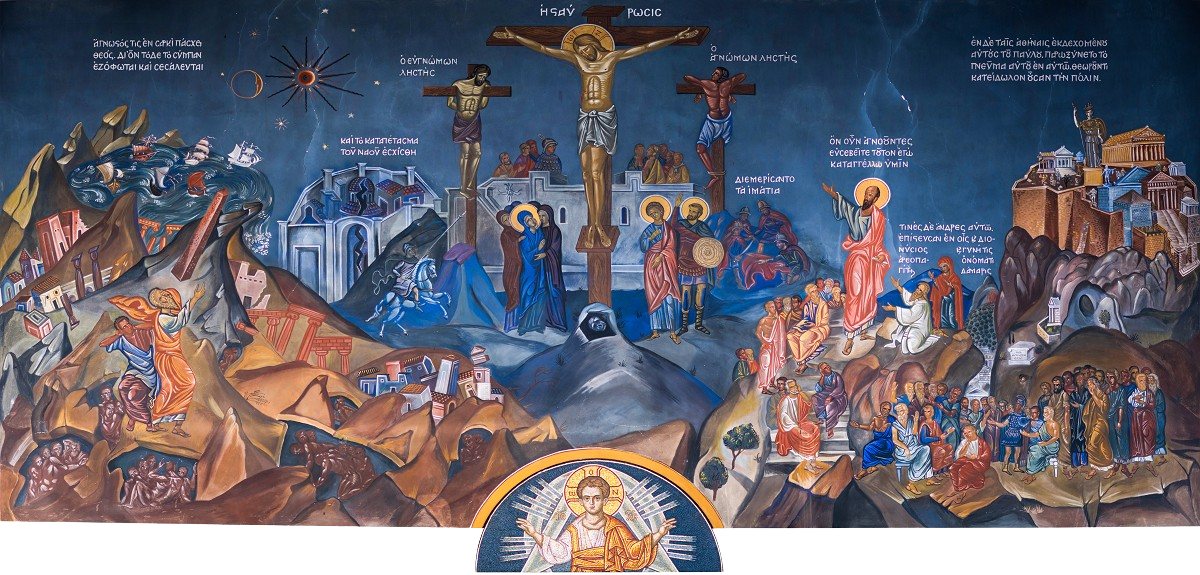
GREETINGS OF THE DIRECTOR OF I.P.E
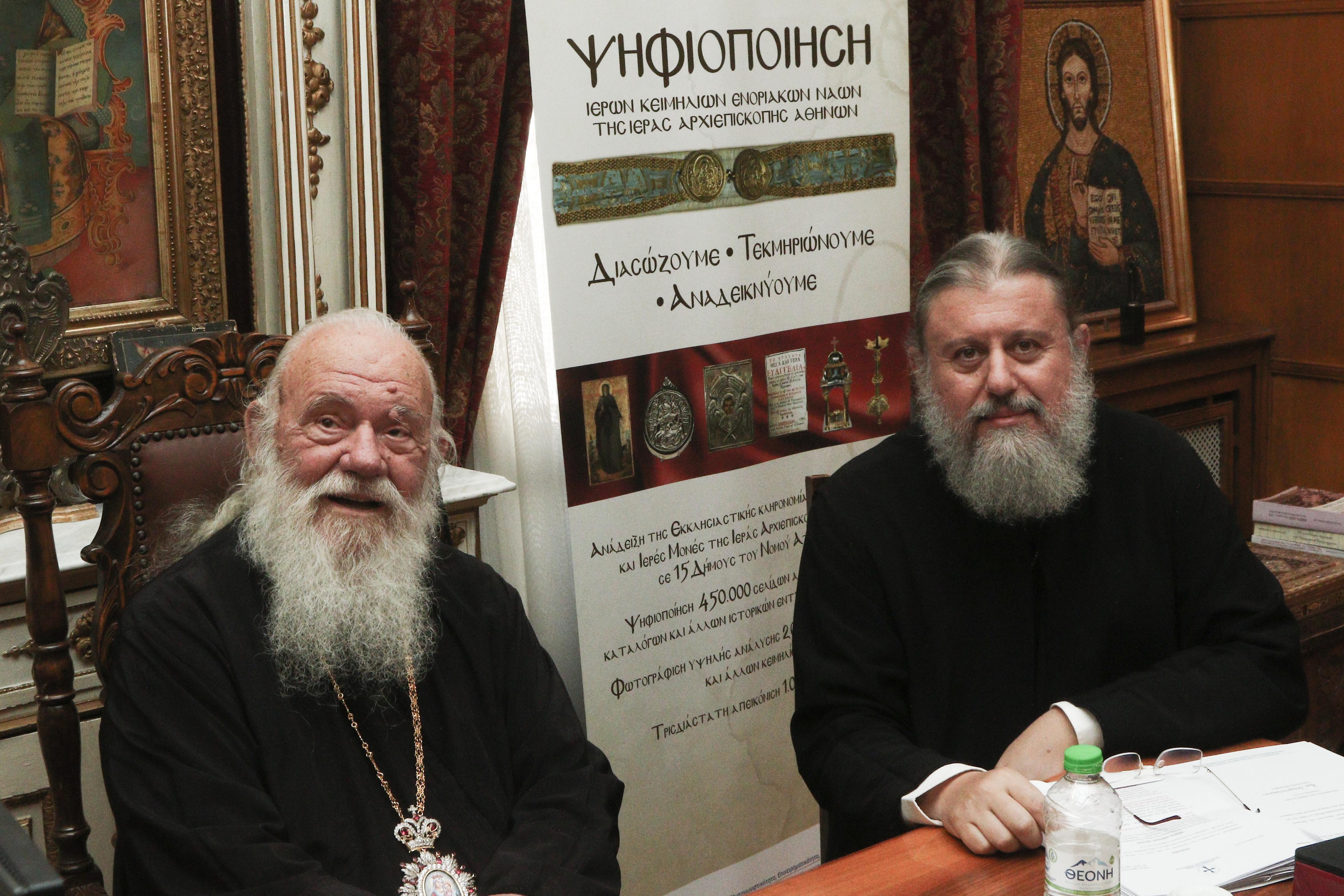
My dear brothers.
In the ancient ecclesiastical literature of the first centuries of our faith there is the testimony that the Church of Athens is stable and gentle. Indeed, the meekness of the spirit of our local Church gave it stability and protected it from all pride and pomp.
This can be seen from the multitude of the many saints who passed and quietly left deep traces of their name and indelible traces of their anguish for the flock of Athens. Meekness as a gift of the Holy Spirit is translated into gentleness, sweetness, softness, elegance, smoothness not as a sign of cowardice or weakness but as an indication of the deepest knowledge of self and the heart that has been surrendered to the peace prince Christ.
Read moreDigitization of Sanctuaries Heirloom Parishioners Temples
The Foundation for Pastoral Training, implementing the vision of His Beatitude the Archbishop of Athens and all Greece, Mr. Jerome II for the promotion, preservation and educational utilization of the sacred relics of the Parishes, Holy Monasteries and chapels of the Holy Archdiocese of Athens, implemented the Act: "Digitization of Holy Relics of Parish Churches" with MIS 6003375, which was co-financed by the Operational Program " Digital Transformation".
The collaborators and technicians of the Pastoral Training Foundation visited the 21 Regions of the Holy Archdiocese of Athens and initially proceeded to record the relics, in collaboration with the High Priest Commissioners and the Presidents of the Ecclesiastical Councils of the Temples. Then followed the digitization of the recorded material.
Read moreIn this context, material from 157 Parish Churches, Holy Monasteries and chapels of the Holy Archdiocese of Athens was digitized, specifically:
- 450,000 pages of books and forms, old editions with functional use and others of an administrative and archival nature
- 26,368 relics and ecclesiastical objects in general
- 800 were digitized with 360 perimeter capture°
- 174 with three-dimensional imaging technique (3d).
Part of this material is deposited on the present website, which was created as a kind of digital museum, to enable everyone to see, study and immerse themselves in the heritage of our fathers, finding that it is invested with an impressive artistic and scientific scope.
At the same time, the possibility is provided to the general public as well as to the specialist-scientific public (archaeologists, theologians, sociologists, anthropogeographers, folklorists, silversmiths, painters, hagiographers and all kinds of scholars of the ecclesiastical artistic expression of the history of Athens) to investigate the various historical fluctuations such as they are reflected in the relics, which in turn shed light - due to the logistical details of their construction and care - moments of the Ecclesiastical History of our country.
Attempting a valuation we can say that the corpus of heirlooms is made up of:
- portable images, often with their silver linings
- holy relics of saints kept in suitable ornate cases
- wood-carved and marble-carved icons
- shutter door
- tributes of the Archbishops of Athens
- sacred vessels
- antimenstrual
- silver talismans of priests or fighters of the period of our National Palingenesis
- memories in books, many by the hand of saints of Athens
- symbols that take us back to the City and the Transdanubian Hegemonies
- leather bindings typical of the ecclesiastical order from the beginning of the 17th century
- holy Tables that reached our time as material in a second, which was used in various ways according to the false testimonies engraved on their bodies, dating precisely to the Persian Wars or even to the time of Christ
- works of famous ecclesiastical workshops dedicated to the newly built temples of the new Capital
- tributes of a multitude of guilds that carry the hopes for a happy outcome of hard work and efforts
- clocks of every type that still keep telling the time, one hundred and two hundred years after their initial kick
- temple bells whose bodies bear wounds of joy, praise, danger and mourning
- copperplates
- icons written by the hands of saints of our Church
- vessels crafted in royal workshops in Europe
- gold-embroidered fabrics from the East
- refugee relics, which, despite their title, are full of splendor and ecclesiastical light and much more...
In addition to these, thousands of already digitized pages of books of Baptisms, Marriages and Funerals present us with the newest History of our homeland, not as recorded in the official records of Delta, but named by people who created new parish homes coming from Asia Minor and the Pontus, named victims of hunger during the dark decade of the 1940s but also heroes of the Great Idea. The flourishing of culture and the economy, the expansion of cities during the 1930s, is reflected in the pages of these holy books of life, as is the phenomenon of urbanization.
The immigration and the change of the old neighborhoods of Asteos, the economic crisis and the new foreign habits leaven the current pages of these volumes, which expect scholars to appreciate the constant and silent work of the priests of the Athenian Church and to give an image of the anthropo-geographical historical map of the Kleinos Asteos of Athens.
Objective of the project:
- the highlighting, preservation and educational utilization of the heritage material
- the avoidance of destruction and loss
- the facilitation of the eventual study project
- the clear knowledge of the volume, type, value and geographical distribution of the relics
- the identification of unknown relics
- the recording of damages
- the prevention and the taking of immediate rescue measures for their maintenance
- the knowledge of the type of relics
- their safe and proper storage and
- their timely detection, after a case of burglary.
But the main goal is to act as a vehicle to pass on the knowledge and experience of our past to our children, in ways and tools that they pass on, ensuring the entry of our tradition into the future.
Why ATHENIAN ARMOSIS;
The success of any similar effort to record and exploit every kind of material or immaterial manifestation of the cultural data of each place, which comes from the collective past, is to ensure the continuity of the journey into the future. This is only achieved if the persons of the present are conscious and aware that they are carriers of a tradition, which can be passed on alive because of the awareness of the carriers.
So our effort is to create a relationship and link our fellow citizens with the historical past and the collective memory, the products of which are the relics kept by the clergy and the people in our temples. These relics, in contrast to the relics that may be found in museums, exhibitions and collections, continue to have functionality and use within the liturgical time of our Church.
It would be possible to claim that the museum exhibits have lost their real status and are at least intellectually inactive without even fulfilling the reason for their construction. In addition, for the exhibited relics to interact in the psychic world of the visitor, he should have and know how to use the correct keys that unlock the symbols of the relics, making them revealing.
Read moreIt was therefore appropriate not to characterize this website as a digital museum of relics, nor a digital exhibition, but to draw from our ecclesiastical experience. What corresponds to the identity and purpose of our project is what the term describes from the marriage sequence "harmosis", that is, the time when the sacrament culminates and the priest becomes the link between the two parties after joins their hands wishing to God "...join them together in unity; crown them in one flesh".
The ancient root "ar" is probably an ancient word, which we find already in the Mycenaean era in the original form of the verb armotto. It most likely interprets the point of firm contact between two parts and denotes stability, pressing, speed, union, fitting, fertility, nourishment and succession.
"ar" is the root of the word arura, meaning arable land. From the same root come words such as bread, bear, term, ancient, silver, the number that consistently succeeds one another, the harmony of sounds, the betrothal that secures the desired, the lamb that constantly sees the earth, the inexhaustible i.e. the natural, the excellent, the indivisible, the slow, but also the words father and mother hide within them the same root. The Latin terra and the English earth which mean earth seem to be related to "ar" as are Arctic and Antarctic. But above all let us remember that the ancient name of Attica is Atthis, derived from the root "ar" and literally means the coast/stable land/land, as all of Attica is a coast.
The presentation of the relics to the general public is a fitting, it is a union that the Church makes, showing the present man his past, indicating the common course and the hierarchy of values, as they emerge through the relics, which we also our series must be preserved and respected, giving honor to those who created them, brought them, maintained them, highlighted them, etc.
So the general title, "ATHENIAN ARMOSIS", is a recommended lifestyle for the modern Athenian and citizen of the world, which hopes to unite the hands of those who have passed with the hands of those who will come, so that all the members of the Attic Church may become one flesh, one body, which carries the experience of centuries and manifests it through the humble remains of time, our heirlooms!
This general title with its very specific goals could not but be accompanied by something that would sensitize the Athenian Church... So what could be better than the so-called Athenian dome, this radiant and noble capping of the temples of Byzantine Athens , a symbol of the sky but also of the protection derived from it. The subject of the frontispiece is the dome of the emblematic church of the Holy Apostles Solakis, which has stood in the Ancient Agora of Athens since 1000 AD.
It used to be a parish, but today it is not…
He used to have heirlooms, but today he has none…
He once had a flock, but today he has none…
But it has the respect and old age that the oldest dome of Athens exudes, the only one that can accommodate us all, shelter us, teach us...
Description of structure and categories
Apart from the HOME page of the ATHENS ARMOSIS website there are six other major sections:
- RELICS
- SAINT CONJUCTION
- ANTIQUES
- TRIBUTES
- ATHENIAN STUDIES
- MOVIES
By selecting one of the fields above, an introductory text is displayed that explains the topic of the module. Each section includes subsections according to the division and classification made during the recording of the material. In the subsections you will also find introductory text and brief explanations of the names that characterize the relics they host.
The information accompanying each relic does not include the place/Parish where it is kept for obvious security reasons. If someone wants more information about an heirloom, e.g. a researcher, chooses to fill out the form in the contact field labeled "Submit a request".
In the section "SYNAX OF SAINTS" you will see the entire content of the subcategory "Reliquary" of the category HOLY VESSEL from the section HEIRS. The subcategory will also be displayed from its familiar position but has a special display due to its specificity. Reliquary are a special vessel, regardless of the value of the box in which the holy relic is kept, they are very important for Christians as all worship has developed around them and around them have also been created all the relics of our temples have been crafted.
The ANTIQUES section is essentially a Digital Library of Antiquities and Manuscripts, which will host the entire digitized archives.
The ATHENIAN STUDIES section is an online library enriched by two sources:
a. by the researchers, who will be interested in studying one of the relics and will request, through the relevant indication, the provision of more information from the Archdiocese (e.g. the place where the relics are kept). They will have the obligation to submit their contribution (in pdf format) to ATHENIAN STUDIES simultaneously with its publication in the scientific body with which they collaborate, e.g. scientific journal etc.
b. by the responsible administrators of the pagechoosing at their discretion from already existing publications, but also anything that can be used as an aid and tool in Athenian studies.
ATHENIAN ARMOSIS
Ecclesiastical relics
For the needs of the digitization of the sacred relics stored in the parish churches of the Holy Archdiocese of Athens, six large grouped categories were created, which are not watertight. Each heirloom can have multiple properties and functions.

Painting Relics

Textile Relics

Sacred Vessels

Sculptured Relics

Printed Relics

Other Relics


